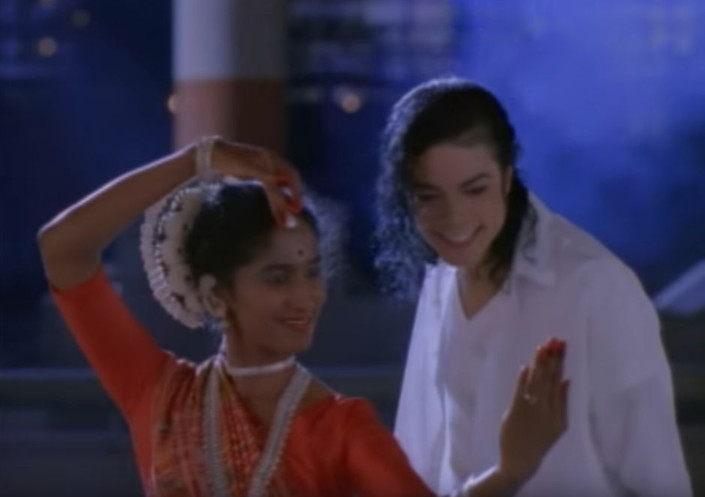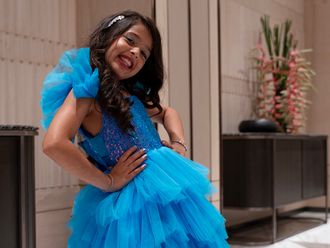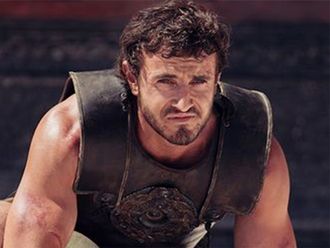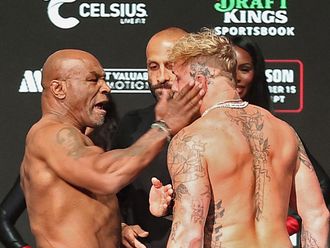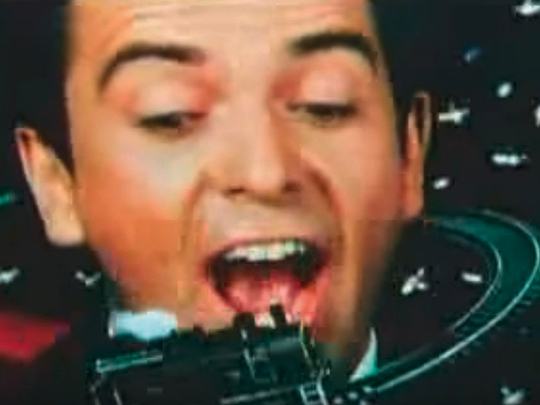
Since even before The Buggles’ video Killed the Radio Star kicked off the MTV era in August 1981, the music video format has proven fertile ground for innovation.
The shorter running times, limited expectation on returns and the eternal quest for something new combined to give acts and directors freedom in creating promos that pushed at the boundaries of innovation and — sometimes — good taste.
For viewers, what this means is lots of creative, remarkable and occasionally ridiculous video concepts. From claymation to virtual reality, IMAX, LEGO and beyond, here are some of the most innovative gimmicks ever to show up on the small screen.
1. A-ha — Take on Me (1985)
Back in 1985, Norwegian synth-pop trio A-ha called upon unknown Irish director Steve Barron to bring Take on Me to life. Using a lesser-known, but well-worn technique called rotoscoping, Barron traced over live action footage shot in a London cafe to create a half-real, half-cartoon world in which lead singer Morton Harket croons to a typically 80s actress-model-dancer as speed racers drawn in charcoal crash into the real world around them. It launched Barron’s career, who went on to direct for Michael Jackson, Madonna and the 1990 live action rendition of Teenage Mutant Ninja Turtles.
2. Peter Gabriel — Sledgehammer (1986)
A grandiose, hallucinogenic stop motion epic, Sledgehammer is one of the most well-known videos ever made. Director Stephen R Johnson used stop-motion camera work to great success with Talking Heads’ Road To Nowhere in 1985, but the vast imagination of this 1986 collaboration — which includes dancing roast chickens, faces made of fruit, and a fully claymation Gabriel having his head beaten in with a hammer — took the technique to its pinnacle.
Gabriel famously lay under a sheet of glass for 16 hours straight while filming the video one frame at a time. Aardman Studios, most famous for their work on Wallace & Gromit, contributed much of the effects, and the video took home nine MTV Video Music Awards.
3. Michael Jackson — Black or White (1991)
The King of Pop could warrant a list all his own for ambitious videos — in fact, he preferred to call them “short films”, and rightfully so. The treatment for Black or White is a sprawling opus to globalism and post-racial harmony. Even more than Macaulay Culkin’s “Eat This!” or that infamous, window-smashing final scene, the lasting memory of the Black or White video is the facial morphing sequence in the final stretch.
It brings the lyrics of the song to life, showing people of all ages, races, and genders becoming morphing into one in the name of pop. Even a quarter century later, the effect is still convincing. The studio behind it, Pacific Data Images, was later purchased by DreamWorks and the team went on to work on Shrek and Antz, among others.
4. Weezer — Buddy Holly (1994)
Back in the salad days of Weezer and director Spike Jonze’s respective careers, the 1994 video for Buddy Holly catapulted them all to stardom while blurring the line between past and present. Shot at the Charlie Chaplin Studios in Hollywood, Jonze recreated the iconic Arnold’s Drive-In set from the definitive 1970s sitcom Happy Days.
Using painstakingly detailed production design, clever sleights-of-hand, spliced footage, and a couple of cameos, the video plays as if Weezer were actually performing in an original episode of the show. The coup de gras is Fonzie appearing to dance a full-on Russian prisyadka as the prepped-out, sweater-clad Weezer riff it up in the background.
5. The White Stripes — Fell in Love With a Girl (2002)
In 2002, The White Stripes were being hailed as the saviours of rock music, and the hype for their third album, White Blood Cells, was only amplified by Michel Gondry’s bonkers concept to make a video entirely out of Lego bricks.
The story goes that Jack White asked for Mark Romanek to direct the video after seeing his work on Beck’s Devil’s Haircut, but the Stripes’ record label mistakenly hired Gondry instead, whose vision for the cut was inspired by watching his son play with Lego building blocks. Gondry used stop-motion to build Lego versions of Meg and Jack White performing live and traipsing around cityscapes. In typical Michel Gondry style, it is simple, lo-fi and ingenious at once. Pitchfork called it the best music video of the last decade.
6. Arcade Fire — We Used To Wait (2010)
There’s the VH1 show Pop-Up Video, and then there’s Arcade Fire’s desktop pop-up video for We Used To Wait. Conceived by visionary music-video-and-virtual-reality director Chris Milk, the experience requires the viewer to enter the address of where they grew up. The video begins by popping up a screen, right on your desktop, of a young man running to the band’s typically haunting indie-rock.
As the track progresses, more and more windows pop up that use Google Earth technology and HTML5 to superimpose aspects of the video atop scenes of your old neighbourhood, weaving the video’s narrative into your own memories. It’s an ingenious concept that tugs at the heartstrings — if you can get it to work on your browser, that is.
7. Bob Dylan — Like a Rolling Stone (2013)
Almost 50 years after its first release, Bob Dylan’s classic finally got a music video. In fact, it got a few. Made by Israeli-American digital agency Interlude, the interactive feature allows viewers to flip through channels like you’re watching TV, except every show corresponds with the song. A cooking show, The Price is Right, local news, Pawn Stars, a tennis match, a kid’s cartoon, and a live video of Bob Dylan and The Hawks from 1966 all play out in unison with the track to great effect.
8. Run the Jewels — Crown (2016)
We’re yet to see if this second coming of virtual reality will live up to the hype, but 2016 did produce the first great 360-degree music video Crown, by politically active hip-hop super-duo Run the Jewels. Thrust into a world of black in your headset (or phone, to slightly lesser effect), the virtual reality experience finds El-P and Killer Mike surrounding you.
As you turn to follow, they disappear and reappear, often tricking your eye and playing with your expectations. The duo rap on issues like crack cocaine, veteran PTSD and gun crime, and the track’s serious mood is heightened by the jarring, sometimes claustrophobic sensory experience.
9. Rihanna — Sledgehammer (2016)
The video for Barbadian pop megastar Rihanna’s coincidentally titled Sledgehammer, released in conjunction with 2016’s Star Trek Beyond, is a visually striking, cinematic science-fiction experience, even when watched on a smartphone. The track’s melodrama is only matched by music video director Floria Sigismondi’s dark touch. The magnificent special effects — half Burning Man, half Battlestar Galactica — were shot, and premiered in, full-blown Imax. It premiered before special showings of Tarzan, and watched on 100ft screens.
10. Shaking Chains — Midnight Oil (2017)
Manchester band Shaking Chains’ first-ever video release uses AI to set off a search algorithm inspired by phrases in the song to create a brand new, totally unique visual experience every time it’s played. Images of make-up tutorials, wacky dances, and newscasts gathered from YouTube chop and change over Shaking Chains’ brusque country-punk swagger. It may seem at random, but there are patterns. Although Shaking Chains won’t let on as to what the search phrases may be, they claim the video is a commentary on chance, control, and the role algorithms play in our everyday experiences. According to the band, the AI will learn new phrases to search over time — evolving — and will never be the same twice. Watch the video here


